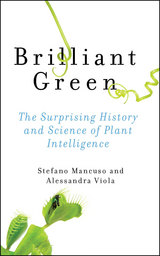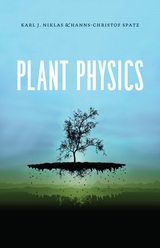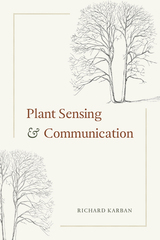3 books about Plant physiology

Brilliant Green
The Surprising History and Science of Plant Intelligence
Stefano Mancuso and Alessandra Viola
Island Press, 2018
Are plants intelligent? Can they solve problems, communicate, and navigate their surroundings? Or are they passive, incapable of independent action or social behavior? Philosophers and scientists have pondered these questions since ancient Greece, most often concluding that plants are unthinking and inert: they are too silent, too sedentary -- just too different from us. Yet discoveries over the past fifty years have challenged these ideas, shedding new light on the extraordinary capabilities and complex interior lives of plants.
In Brilliant Green, Stefano Mancuso, a leading scientist and founder of the field of plant neurobiology, presents a new paradigm in our understanding of the vegetal world. Combining a historical perspective with the latest in plant science, Mancuso argues that, due to cultural prejudices and human arrogance, we continue to underestimate plants. In fact, they process information, sleep, remember, and signal to one another -- showing that, far from passive machines, plants are intelligent and aware. Through a survey of plant capabilities from sight and touch to communication, Mancuso challenges our notion of intelligence, presenting a vision of plant life that is more sophisticated than most imagine.
Plants have much to teach us, from network building to innovations in robotics and man-made materials -- but only if we understand more about how they live. Part botany lesson, part manifesto, Brilliant Green is an engaging and passionate examination of the inner workings of the plant kingdom.
Financial support for the translation of this book has been provided by SEPS: Segretariato Europeo Per Le Pubblicazioni Scientifiche.
In Brilliant Green, Stefano Mancuso, a leading scientist and founder of the field of plant neurobiology, presents a new paradigm in our understanding of the vegetal world. Combining a historical perspective with the latest in plant science, Mancuso argues that, due to cultural prejudices and human arrogance, we continue to underestimate plants. In fact, they process information, sleep, remember, and signal to one another -- showing that, far from passive machines, plants are intelligent and aware. Through a survey of plant capabilities from sight and touch to communication, Mancuso challenges our notion of intelligence, presenting a vision of plant life that is more sophisticated than most imagine.
Plants have much to teach us, from network building to innovations in robotics and man-made materials -- but only if we understand more about how they live. Part botany lesson, part manifesto, Brilliant Green is an engaging and passionate examination of the inner workings of the plant kingdom.
Financial support for the translation of this book has been provided by SEPS: Segretariato Europeo Per Le Pubblicazioni Scientifiche.
[more]

Plant Physics
Karl J. Niklas and Hanns-Christof Spatz
University of Chicago Press, 2012
From Galileo, who used the hollow stalks of grass to demonstrate the idea that peripherally located construction materials provide most of the resistance to bending forces, to Leonardo da Vinci, whose illustrations of the parachute are alleged to be based on his study of the dandelion’s pappus and the maple tree’s samara, many of our greatest physicists, mathematicians, and engineers have learned much from studying plants.
A symbiotic relationship between botany and the fields of physics, mathematics, engineering, and chemistry continues today, as is revealed in Plant Physics. The result of a long-term collaboration between plant evolutionary biologist Karl J. Niklas and physicist Hanns-Christof Spatz, Plant Physics presents a detailed account of the principles of classical physics, evolutionary theory, and plant biology in order to explain the complex interrelationships among plant form, function, environment, and evolutionary history. Covering a wide range of topics—from the development and evolution of the basic plant body and the ecology of aquatic unicellular plants to mathematical treatments of light attenuation through tree canopies and the movement of water through plants’ roots, stems, and leaves—Plant Physics is destined to inspire students and professionals alike to traverse disciplinary membranes.
[more]

Plant Sensing and Communication
Richard Karban
University of Chicago Press, 2015
The news that a flowering weed—mousear cress (Arabidopsis thaliana)—can sense the particular chewing noise of its most common caterpillar predator and adjust its chemical defenses in response led to headlines announcing the discovery of the first “hearing” plant. As plants lack central nervous systems (and, indeed, ears), the mechanisms behind this “hearing” are unquestionably very different from those of our own acoustic sense, but the misleading headlines point to an overlooked truth: plants do in fact perceive environmental cues and respond rapidly to them by changing their chemical, morphological, and behavioral traits.
In Plant Sensing and Communication, Richard Karban provides the first comprehensive overview of what is known about how plants perceive their environments, communicate those perceptions, and learn. Facing many of the same challenges as animals, plants have developed many similar capabilities: they sense light, chemicals, mechanical stimulation, temperature, electricity, and sound. Moreover, prior experiences have lasting impacts on sensitivity and response to cues; plants, in essence, have memory. Nor are their senses limited to the processes of an individual plant: plants eavesdrop on the cues and behaviors of neighbors and—for example, through flowers and fruits—exchange information with other types of organisms. Far from inanimate organisms limited by their stationary existence, plants, this book makes unquestionably clear, are in constant and lively discourse.
In Plant Sensing and Communication, Richard Karban provides the first comprehensive overview of what is known about how plants perceive their environments, communicate those perceptions, and learn. Facing many of the same challenges as animals, plants have developed many similar capabilities: they sense light, chemicals, mechanical stimulation, temperature, electricity, and sound. Moreover, prior experiences have lasting impacts on sensitivity and response to cues; plants, in essence, have memory. Nor are their senses limited to the processes of an individual plant: plants eavesdrop on the cues and behaviors of neighbors and—for example, through flowers and fruits—exchange information with other types of organisms. Far from inanimate organisms limited by their stationary existence, plants, this book makes unquestionably clear, are in constant and lively discourse.
[more]
READERS
Browse our collection.
PUBLISHERS
See BiblioVault's publisher services.
STUDENT SERVICES
Files for college accessibility offices.
UChicago Accessibility Resources
home | accessibility | search | about | contact us
BiblioVault ® 2001 - 2024
The University of Chicago Press









